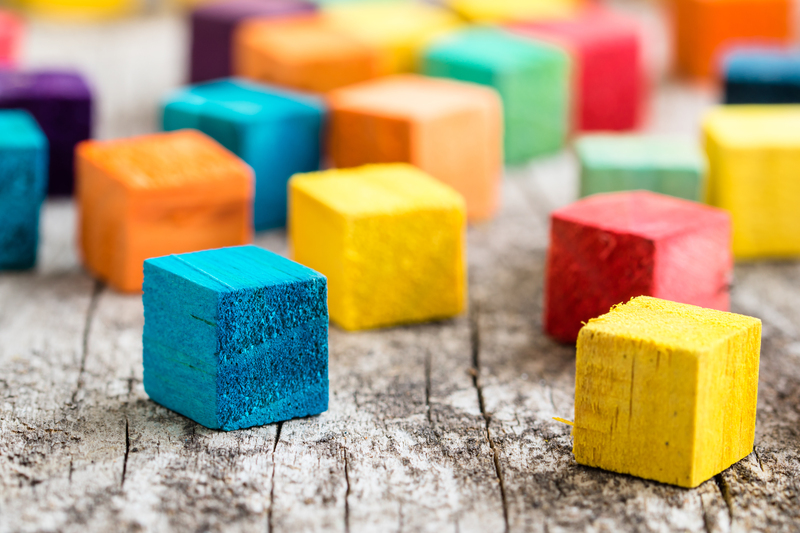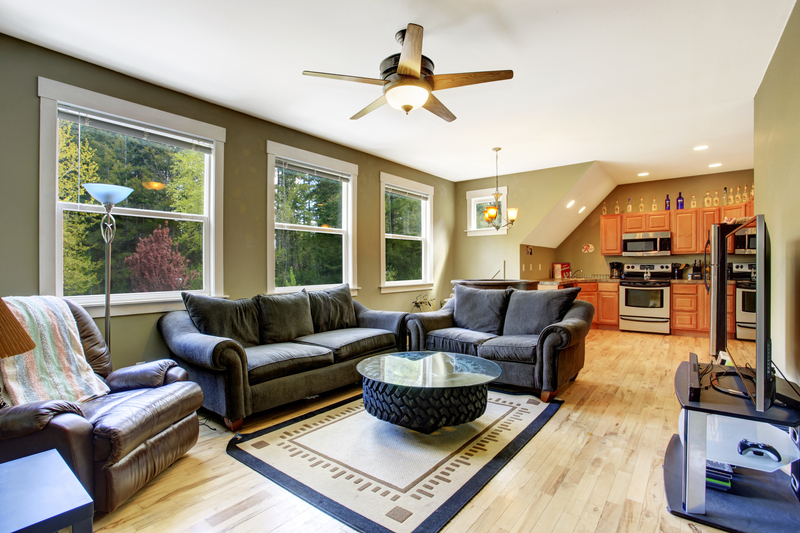High-Impact Clutter Solutions for Hoarder Homes and Overcrowded Spaces
Are you struggling to find your keys beneath stacks of magazines, or is your living room so filled with belongings that it's become unusable? If clutter has taken over your home, you're not alone. Millions of people--regardless of where they live--struggle with overcrowded spaces and hoarder-like environments. Tackling these issues can feel overwhelming, but with high-impact clutter solutions designed for hoarder homes, you can restore order, improve your quality of life, and reclaim your surroundings.
Understanding the Roots of Clutter and Hoarding Problems
Before we delve into actionable decluttering strategies for hoarder homes, it's important to understand what drives chronic accumulation. Hoarding disorder is a complex psychological condition characterized by persistent difficulty discarding possessions, regardless of their value. Even for those who don't meet the clinical criteria for hoarding, various emotional and practical factors can contribute to overwhelming clutter.
- Emotional attachment to items
- Fear of needing something in the future
- Lack of organizational systems
- Anxiety, depression or grief
- Inherited or gifted excess belongings
Recognizing which applies to your situation is the first step in finding sustainable, high-impact clutter solutions for overcrowded areas of your home.

Step-By-Step Guide: Transforming Overcrowded Spaces
No matter how daunting the mess, you can transform even the most densely packed hoarder homes with a systematic, empathetic approach. Here's a comprehensive guide to high-impact clutter solutions for overcrowded spaces:
1. Establish Clear Goals & Priorities
- Decide which rooms, zones, or storage areas need attention first.
- Set realistic expectations for what you can accomplish in one session.
- Write down your goals and prioritize spaces that cause the most stress.
- Visualize your ideal, clutter-free home to boost motivation.
2. Assemble Tools & Support
- Gather cleaning supplies--garbage bags, bins, labels, gloves, cleaning agents.
- Acquire sturdy boxes for sorting keep, toss, donate, and recycle categories.
- Recruit trusted family members or friends for moral and physical assistance.
- For severe hoarding, consider a professional organizer or therapist experienced in hoarder home solutions.
3. Start Small--Win Big
Tackling a hoarder's home or an overcrowded space can feel paralyzing. Avoid burnout by working in small sections at a time:
- Begin with a single drawer, closet, or corner of one room.
- Set a timer (20-40 minutes) to keep sessions manageable.
- Celebrate victories, no matter how minor!
High-Impact Decluttering Techniques
Sort with a Purpose
Sorting is the cornerstone of all effective clutter removal solutions for hoarder homes. Use the "Four-Box Method":
- Keep: Items you use and love.
- Donate: Items in good condition but no longer needed.
- Toss: Broken or unusable items.
- Relocate: Belongings that belong in another room.
Apply the 6-Month Rule
If you haven't used or worn something in the past 6 months (or 12 months for seasonal items), chances are you won't miss it. This simple yet effective decluttering technique prevents overthinking and keeps the momentum going.
Contain & Conquer: Creative Storage Solutions
Not every item must go. Use these high-impact storage solutions for overcrowded areas:
- Vertical shelving--Maximize wall space for books, bins, and decor.
- Under-bed storage--Perfect for clothes, linens, and seldom-used items.
- Stackable containers--Clear plastic bins let you see contents at a glance.
- Hanging organizers--Keep shoes, accessories, or kitchen tools tidy and easy to access.
The Psychological Side: Compassionate Decluttering
Clearing out jam-packed spaces in a hoarder's home can trigger intense emotions--grief, anxiety, guilt, and fear of loss. For enduring results, pair physical decluttering with emotional support:
- Acknowledge the emotional value of possessions. Allow time to reminisce, and take photos of items before letting go.
- Seek support groups or professional counseling, especially if hoarding disorder is present.
- Reward yourself for milestones--schedule breaks, enjoy a favorite treat, or share progress with a friend.
Room-by-Room High-Impact Clutter Solutions
Every part of a hoarder's home or overcrowded space presents unique challenges. Here's how to reclaim each key area:
Living Room
- Start by clearing surfaces (coffee tables, side tables, entertainment centers).
- Use baskets or ottomans with hidden storage for remote controls, magazines, and blankets.
- Limit decor pieces--choose a few favorites and store or donate the rest.
Kitchen
- Dispose of expired food, duplicate utensils, broken appliances, and unused gadgets.
- Group pantry items in clear bins or labeled baskets--rotate older stock to the front.
- Utilize cabinet door organizers for spices, cleaning supplies, and lids.
Bedroom
- Pare down clothing using the 6-month rule; donate gently worn items.
- Store out-of-season clothes under the bed or in labeled bins.
- Simplify bedding--one comforter, one set of sheets per bed is usually enough.
Bathroom
- Dispose of old cosmetics, expired medicines, and empty containers.
- Use drawer inserts and over-the-door racks to organize toiletries.
- Limit towels and linens to one set per person in the household.
Maintaining a Clutter-Free Home: Sustainable Habits
Decluttering a hoarder's home is just the beginning. Lasting change requires new habits:
- One-in, one-out rule: For every new item brought in, remove one.
- Daily 10-minute tidy: Quick daily resets prevent mess from accumulating.
- Monthly donation box: Keep a designated box for unwanted items and donate regularly.
- Establish designated homes for all possessions to avoid future chaos.
When to Seek Professional Help
Some hoarder homes require more than DIY solutions. Seek confidential, non-judgmental assistance if:
- Clutter poses a health or safety hazard.
- Mold, vermin, or structural damage are present.
- The person struggles with decision-making due to anxiety, OCD, depression, or trauma.
- Previous attempts at decluttering have failed.
Professional organizers, cleaning services, and therapists specializing in hoarding disorder can provide personalized, high-impact clutter solutions. Their compassionate expertise can break cycles of accumulation and help create practical systems that are easier to maintain.
Benefits of Decluttering: Beyond Clean Spaces
Implementing high-impact clutter solutions in hoarder homes and overcrowded spaces offers numerous life-changing benefits:
- Improved safety: Reduced trip and fire hazards.
- Enhanced mental health: Less stress, depression, and anxiety.
- Better relationships: Increased comfort in entertaining guests.
- More usable space: Reclaim rooms for their intended purpose.
- Increased productivity: Find what you need, when you need it.
- Financial savings: Stop buying duplicates--you know what you have!
Top Tips for Preventing Recurring Clutter
Even after a major declutter, chronic clutterers and those with hoarder tendencies must be vigilant. Here's how to prevent a relapse:
- Shop mindfully: Only buy what you truly need. Avoid impulse purchases.
- Deal with mail immediately: Throw away junk mail daily; file important papers promptly.
- Digitize photos and papers: Minimize physical paperwork with cloud storage and scanned photos.
- Get the household involved: Share responsibilities and communicate storage systems with everyone at home.
- Schedule regular mini-declutters: Set calendar reminders for quarterly clean-outs.

Resources for Hoarder Homes and Clutter-Challenged Spaces
If you need extra support on your decluttering journey, you might find these resources helpful:
- Books: "The Life-Changing Magic of Tidying Up" (Marie Kondo), "Buried in Treasures" (Tolin, Frost, Steketee)
- Websites and Forums: National Association of Productivity & Organizing Professionals (NAPO), HoardingCleanup.com
- Support Groups: Online and neighborhood peer-led groups for hoarding disorder
- Professional Services: Find certified organizers and hoarding specialists in your area for hands-on assistance.
Final Thoughts: Embracing Change One Step at a Time
You don't have to be defined by a cluttered space. Whether you're facing the emotional complexities of hoarding disorder or simply need high-impact clutter solutions for an overcrowded closet, change is possible. Approach the process with self-compassion, enlist support, and use practical declutter strategies tailored to your unique challenges. With persistence and the right tools, your home can become a safe, serene, and welcoming environment once again.
Ready to reclaim your space? Start with one small action today--your future self will thank you!